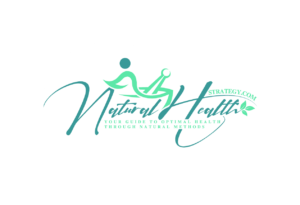Chronic pain management is essential for individuals who experience ongoing pain that lasts for weeks, months, or even years. Chronic pain can significantly affect your quality of life, making it challenging to carry out daily tasks or enjoy regular activities. While acute pain is temporary, chronic pain requires a long-term approach to treatment and care.
In this article, we’ll explore various strategies to manage chronic pain effectively. From medical treatments to lifestyle changes, these methods can provide relief, improve functionality, and help you regain control over your life without letting pain define your day-to-day experiences.
Understanding Chronic Pain
Chronic pain is persistent pain that lasts for at least three months, often continuing long after an injury or illness has healed. Unlike acute pain, which serves as a warning signal from your body, chronic pain may persist without an obvious cause. It can range from mild discomfort to severe, debilitating pain, affecting various parts of the body, such as the back, joints, or muscles.
Chronic pain can stem from numerous conditions, including arthritis, fibromyalgia, nerve damage, or previous injuries. Understanding the nature of chronic pain is the first step toward effective chronic pain management.
Common Symptoms of Chronic Pain

Chronic pain manifests differently for each person, but certain symptoms are commonly experienced. These symptoms can range in intensity and duration, often interfering with daily activities and overall well-being.
Common symptoms include:
- Persistent pain that lasts for months or years
- Stiffness or aching in specific areas of the body
- Burning or shooting sensations in nerves or muscles
- Fatigue due to interrupted sleep caused by pain
- Difficulty with mobility or performing physical tasks
- Emotional effects such as irritability, anxiety, or depression
Recognizing these symptoms is crucial for determining the best approach to managing long-term discomfort.
Diagnosis and Assessment of Chronic Pain
Diagnosing persistent pain involves a thorough assessment by healthcare professionals. A comprehensive evaluation helps identify the root cause of the pain and the best treatment options.
The diagnosis process typically includes:
- Medical history: Reviewing previous health issues, injuries, or surgeries that may contribute to the ongoing pain.
- Physical examination: Assessing the affected areas to identify tender spots, swelling, or restricted movement.
- Diagnostic tests: Imaging tests like X-rays, MRIs, or CT scans can help pinpoint underlying issues, such as nerve damage or joint inflammation.
- Pain scales: Doctors may ask you to rate your pain on a scale from 1 to 10 to gauge its intensity and impact on your life.
An accurate diagnosis is the foundation for creating a personalized treatment plan that provides lasting relief.
Conventional Medical Treatments

For many people, conventional medical treatments are a key component of chronic pain management. These treatments aim to reduce pain, improve mobility, and enhance overall quality of life. A healthcare provider typically combines various therapies depending on the type and severity of pain.
Common medical treatments include:
- Medications: Over-the-counter pain relievers like ibuprofen, or prescription options such as opioids or muscle relaxants, can help alleviate discomfort. However, medications must be used carefully to avoid dependence.
- Injections: Corticosteroid injections or nerve blocks can provide temporary relief by reducing inflammation or interrupting pain signals.
- Surgical procedures: In severe cases, surgery may be considered, especially if there’s structural damage (such as spinal issues) contributing to the pain.
While these treatments can be effective, they often work best when combined with other non-pharmaceutical approaches for comprehensive relief.
Non-Pharmaceutical Therapies
Non-pharmaceutical therapies are often effective in reducing discomfort without relying on medication. These approaches focus on improving the body’s natural ability to heal and manage pain.
Popular non-drug therapies include:
- Physical therapy: Customized exercises strengthen muscles, improve mobility, and alleviate tension. It’s particularly useful for conditions like arthritis or back pain.
- Acupuncture: This ancient Chinese practice involves inserting thin needles into specific points on the body to stimulate pain relief.
- Massage therapy: Regular massages can reduce muscle stiffness and improve blood circulation, which may decrease pain levels.
- Chiropractic care: Adjustments to the spine and joints can help relieve pain caused by misalignment or tension.
These therapies, when used alongside other chronic pain management strategies, provide a holistic approach to managing long-term pain.
Lifestyle Modifications

Making changes to your daily routine can significantly improve how you manage persistent pain. Simple lifestyle adjustments can enhance your overall health, reduce discomfort, and prevent pain from worsening.
Key lifestyle modifications include:
- Exercise regularly: Low-impact activities like swimming, walking, or yoga can strengthen muscles, improve flexibility, and alleviate tension without causing strain.
- Maintain a healthy weight: Excess weight can put pressure on joints and muscles, worsening pain, especially in the back, hips, and knees.
- Get quality sleep: Pain can disrupt sleep, leading to fatigue and worsening symptoms. Establish a calming bedtime routine and create a comfortable sleep environment.
- Avoid smoking: Smoking reduces blood flow, slows healing, and may increase sensitivity to pain, particularly in the spine and joints.
By incorporating these habits into your daily routine, you can support your body’s natural healing processes and reduce pain over time.
Complementary and Alternative Therapies
In addition to conventional treatments, many people find relief through chronic pain management techniques like complementary and alternative therapies. These approaches focus on the mind-body connection and holistic healing, providing additional options for managing long-term pain.
Common complementary therapies include:
- Mindfulness and meditation: These practices help you manage the emotional impact of pain, reduce stress, and improve your mental well-being. Mindfulness techniques can shift your focus away from the pain, providing a sense of control.
- Herbal supplements: Natural remedies like turmeric, ginger, and omega-3 fatty acids have anti-inflammatory properties that may reduce pain. Always consult a healthcare provider before starting supplements.
- Aromatherapy: Essential oils like lavender or eucalyptus may promote relaxation and ease muscle tension, contributing to pain relief.
While these therapies may not work for everyone, combining them with other strategies can create a well-rounded, personalized approach to managing pain.
Chronic Pain Management Plans
An effective chronic pain management plan involves a combination of treatments tailored to your specific needs. Since every individual’s pain is unique, a personalized approach ensures better outcomes and long-term relief.
Components of a successful management plan include:
- Medical treatments: Medications, injections, or surgical interventions when necessary.
- Therapies: Physical therapy, acupuncture, or massage to address physical symptoms.
- Lifestyle changes: Exercise, weight management, and sleep optimization to improve overall well-being.
- Stress management: Incorporating mindfulness, meditation, or relaxation techniques to manage the emotional impact of pain.
- Regular assessments: Ongoing evaluations with your healthcare provider to monitor progress and adjust treatments as needed.
A balanced plan is key to achieving sustained relief and improving your quality of life.
When to Seek Professional Help
While many strategies can help manage long-term pain, there are times when professional medical help is necessary. If pain worsens or disrupts your ability to carry out everyday activities, it’s important to consult a healthcare provider. They can assess your condition and recommend appropriate treatments.
Signs you should seek help:
- Pain becomes more intense or spreads to new areas.
- Home treatments or medications no longer provide relief.
- Pain affects your ability to sleep, work, or perform daily tasks.
- You experience new symptoms like numbness, weakness, or fever.
Seeking timely help can prevent pain from escalating and ensure you receive the right care for long-term relief.
Summary: Chronic Pain Management
| Treatment Type | Description |
|---|---|
| Medications | Includes over-the-counter pain relievers, prescription opioids, and muscle relaxants. |
| Physical Therapy | Exercises and stretches that improve mobility and reduce muscle tension. |
| Acupuncture | Involves inserting thin needles into specific points on the body to relieve pain. |
| Massage Therapy | Reduces muscle stiffness and improves circulation to alleviate pain. |
| Mindfulness | Practices like meditation to manage the emotional impact of chronic pain. |
Conclusion
Effective chronic pain management requires a comprehensive, personalized approach. By combining medical treatments with non-pharmaceutical therapies, lifestyle changes, and complementary options, you can find long-lasting relief. Managing pain is not a one-size-fits-all solution, so it’s important to explore various strategies and discover what works best for your specific condition.
Whether you’re trying to improve sleep, reduce stress, or incorporate physical activity, the goal is to restore balance in your life and prevent pain from controlling your daily routine. Consistency and working closely with healthcare professionals are key to achieving better outcomes.
References
- Mayo Clinic – “Chronic Pain: Treatments and Drugs.” Available at: www.mayoclinic.org
- American Chronic Pain Association (ACPA) – “Pain Management Tools and Resources.” Available at: www.acpanow.com/





